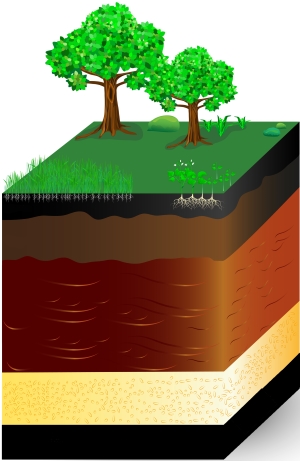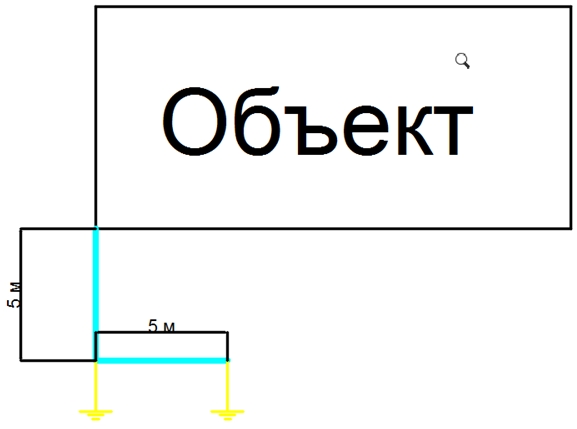We have already written about the importance of taking into account the soil resistivity in calculation and design of grounding and lightning protection. However, several soil types in one plot can be surprising. And they can be located at different horizontal and vertical levels. Such layers may have different density levels, but their resistivity may be different, too, which should be taken in account as well. What should we do in such situations?

Let's consider one example. We have received a request to calculate grounding for an object located on two-layer ground with the following parameters:
- Surface layer thickness 0.1 m;
- Top layer thickness 0.4 m;
- Upper layer resistivity during measurement 3000 Ohm * m;
- Resistivity of the lower soil layer during measurement 1500 Ohm * m;
- Type of the top soil layer - permafrost;
- Type of the lower soil layer - permafrost;
- Type of soil surface layer - gravel;
- Soil state during measurement - slightly wet.
- Resistivity of the lower soil layer during measurement 1500 Ohm * m;
According to Electrical Installation Code 7 th ed. p.1.7.101, the resistance of the grounding device during any season should not exceed 4 ohms. When the resistivity of the earth is more than 100 Ohm / m, it is possible to increase these values by 0.01 times, but not more than ten-fold. Thus, 0.01 * 15 = 1500, i.e. 10 times as much, which means that the resistance of the grounding device should not exceed 4 * 10 = 40 ohms.
Resistivity of the lower soil layer was taken as the value to be calculated, because the grounding device would be placed there The difference in resistance of the layers can' be explained by the type of soil (it is identical), but by the differences in temperature. The soil on the surface is more exposed to freezing, so its resistance is maintained at an "elevated" level. Having carried out necessary calculations the technicians from ZANDZ.com offered the solution corresponding to the necessary requirements to the grounding device: installation of two kits of electrolytic grounding ZANDZ ZZ-100-102. The kits are combined with a copper-clad stripe with the section of 30x4 mm. The stripe is placed at the depth of 0.5 m.

Electrolytic grounding of ZZ-100-102 in relation to the object
Object
The final specification:
| Product | Product item | Q-ty | Color in the layout |
| Copper-clad stripe (30 * 4 mm / S 120 mm²; 10 meters coil) | GL-11075-10 | 1 | |
| Electrolytic grounding kit (horizontal; 3 m) | ZZ-100-102 | 2 |
If such grounding rod is used, the final resistance of the grounding device comprises 30.64 ohms, which is less than the required 40 ohms.
Do you also need help with calculations or choosing grounding and lightning protection? Contact us and we will surely help!
Related Articles:




